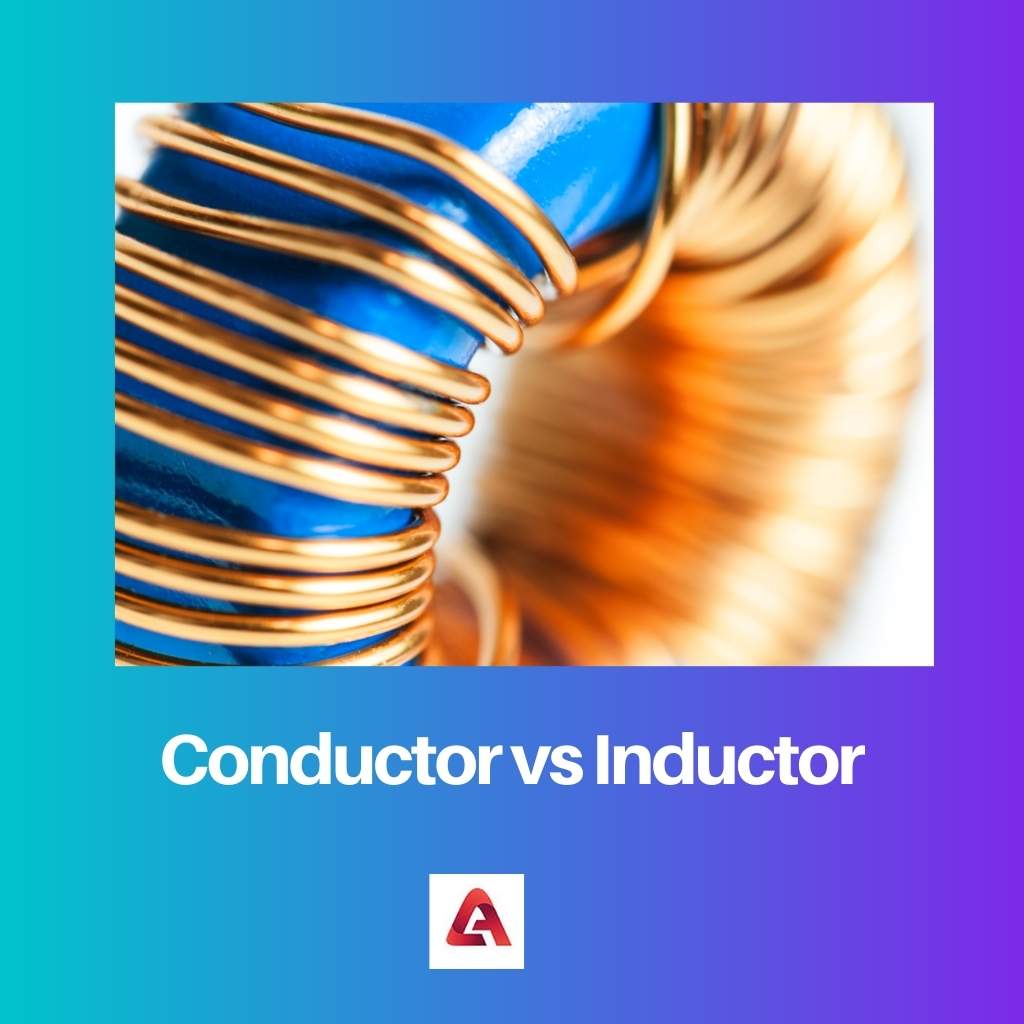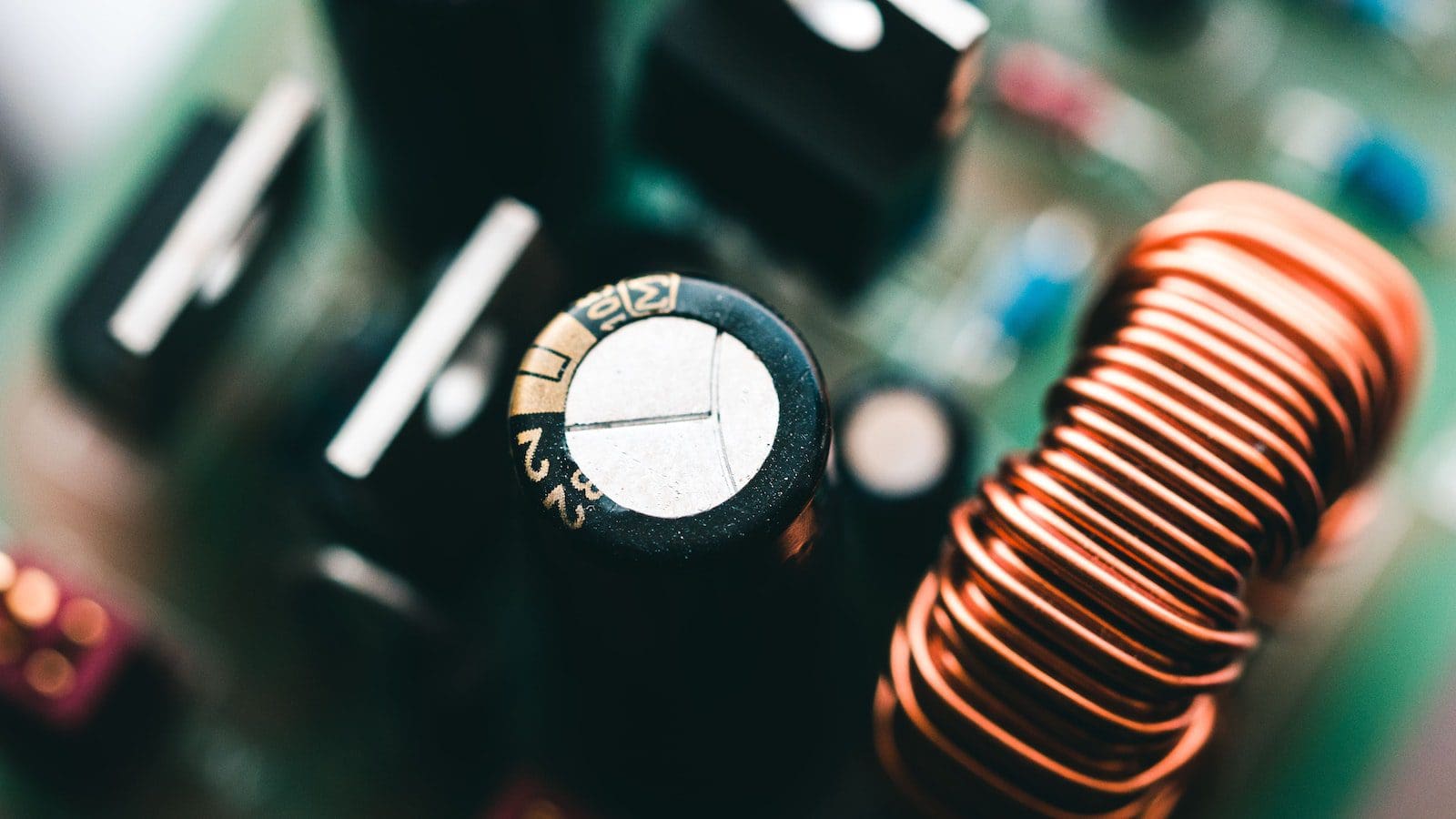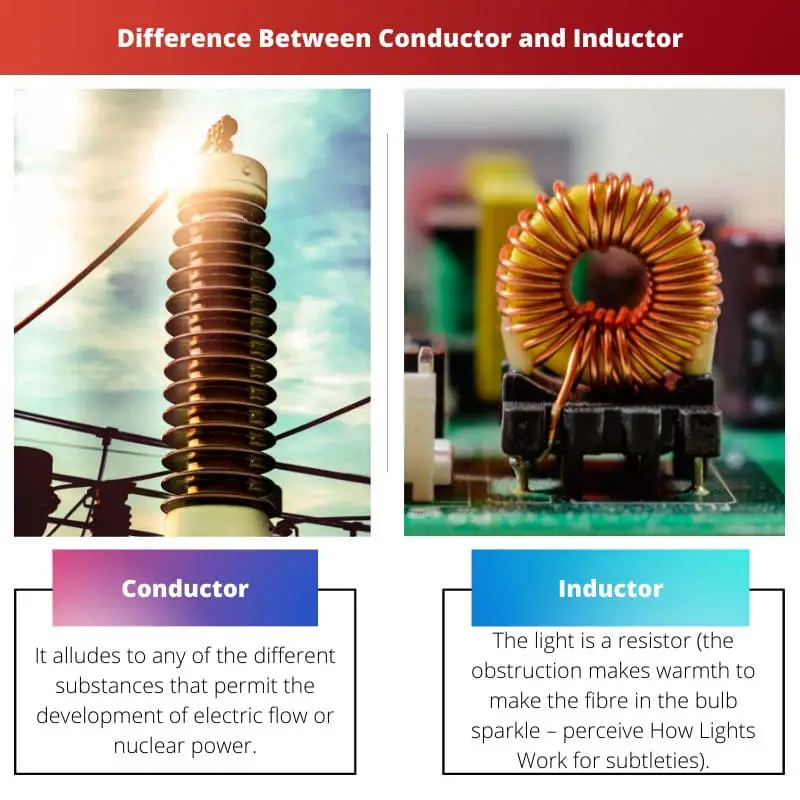One of the fundamental contrasts between a conductor and an inductor is that a conductor goes against an adjustment of voltage while an inductor goes against an adjustment of the current.
Besides, the inductor stores energy as an attractive field, and the conductor stores energy as an electric field.
Key Takeaways
- Conductors allow electricity to flow through them easily, whereas Inductors resist changes in electrical current and store energy in a magnetic field.
- Conductors have low resistance, while Inductors have high resistance.
- Conductors are used for transmitting electricity, while Inductors are used for filtering and tuning electrical signals.
Conductor vs Inductor
The conductor is any substance or material that allows the development and flow of electric or nuclear energy with high conductivity, and it has free electrons. The inductor is a material that does not allow the free flow of electrons but holds them firmly inside the molecules of a material.

A conductor is depicted as a material that licenses electrons to stream uninhibitedly and effectively, starting with one specific and then onto the next in at least one bearing.
Such free progression of electrons permits the energy as warmth or electric charge to go through the concerned material without any problem.
An inductor, then again, is a material that doesn’t allow electrons to stream uninhibitedly.
Despite what is expected, it holds the electrons firmly inside the molecules of a material and thus deters the free progression of energy as warmth or electric flow goes through the material.
Comparison Table
| Parameters of Comparison | Conductor | Inductor |
|---|---|---|
| Work | It opposes changes in voltage. | It opposes changes in current. |
| Frequency | The voltage in a Conductor doesn’t change immediately. | The current in an inductor doesn’t change promptly |
| Unit | The unit of conductance is Farad. | The unit of inductance is Henry. |
| Formula | Voltage slacks current by π/2 | Current slacks voltage by π/2 |
| Types of Current | The Conductor capacities as a short out for rotating current | Inductor capacities as a short out for direct current |
What is Conductor?
It alludes to any of the different substances that permit the development of electric flow or nuclear power. They have high conductivity and helpless protection from the progression of electric or nuclear power.
This takes place on account of the presence of ‘free electrons in the nuclear design of a conductor.
‘Free electrons’ allude to those electrons that can be traded with the electrons of different iotas without any problem. That is their bond with the molecule, of which they are a section that needs strength.
This absence of solidarity allows the free progression of energy, starting with one iota and then onto the next.
The degree to which a material or a substance permits charges or warmth to go through it relies upon the quantity of ‘free electrons’ it has in the furthest circles of its iotas.
A substance or material can be supposed to be a decent conductor in the event that it has an abundant quantity of ‘free electrons’ in the furthest or fringe shells of its molecules.
Additionally, there ought to be no space between the conduction band and the valence band (known as the illegal energy hole), so the electrons can, without much of a stretch, move to different iotas.
An item that is made of a material that has leading characteristics will get the charges said no thanks to it from another object and permit those charges to get conveyed all around its surface except if the terrible powers that exist between the excess electrons decrease to the greatest degree conceivable.

What is Inductor?
The light is a resistor (the obstruction makes warmth to make the fibre in the bulb sparkle – perceive How Lights Work for subtleties).
The wire in the loop has a lot of lower obstruction (it’s simply wire), so what we would expect when you turn on the switch is for the bulb to sparkle faintly.
The majority of the current ought to follow the low-obstruction way through the circle. What occurs instead is that when you close the switch, the bulb consumes brilliantly and afterwards gets dimmer.
At the point when you open the controller, the bulb consumes brilliantly and later rapidly goes out.
The justification behind this weird conduct is the inductor. When the current initial beginnings were streaming in the loop, the curl needed to develop an attractive field. While the area is building, the loop hinders the progression of the current.
When the parcel is constructed, the wind can stream through the wire. When the switch gets opened, the attractive field around the loop keeps the current streaming in the curl until the field breaks down.
This current makes the bulb glow for a while even though the switch is open. An inductor can store energy in its attractive field, and an inductor will, in general, oppose any adjustment of the measure of current moving through it.

Main Differences Between Conductor and Inductor
- The conductor stores energy as an electric field, though the Inductor stores energy as an attractive field.
- The energy put away in the Conductor is determined as far as voltage, for example, ½ CV2. The power put away is resolved as far as current, for instance, ½ LI2
- There is no current progression through the Conductor plates, yet an inductive current goes through the loop.
- Conductors go about as a protector for DC circuits, though Inductor goes about as a conductor for DC circuits.
- In an air conditioner circuit for the Conductor, the current leads voltage by 90 degrees, and in the event of an inductor, the current slacks voltage by 90 degrees.

- https://ieeexplore.ieee.org/abstract/document/1211182/
- https://ieeexplore.ieee.org/abstract/document/1516170/

I found the article to be very informative and enlightening. The detailed explanations are incredibly helpful in understanding the topic more deeply.
The comparison table is very helpful in highlighting the key differences between conductors and inductors. It’s a valuable addition to the article.
This article provides a great comparison and easy-to-understand explanations of the differences between conductors and inductors.
I agree, the content is very well written and easy to follow.
Yes, the content is informative and straightforward, providing a clear understanding of the topic.
The content provides comprehensive insights into the workings of conductors and inductors, making it a valuable resource for anyone studying the subject.
Absolutely, the detailed breakdown of how conductors and inductors function is truly commendable.
The comparisons and examples given in the article make it easier to understand the differences between conductors and inductors, especially for those less familiar with the topic.
I agree, the content is presented in a way that’s accessible and educational.
This article effectively breaks down the intricate details of conductors and inductors in a comprehensive and engaging manner.
I found the post to be insightful and well-structured, providing a valuable understanding of conductors and inductors.
The explanation of the main differences between conductors and inductors is excellent, making it easy for readers to grasp the concept.
I appreciate the detailed explanations provided in the article. They offer a profound understanding of the complex concepts involved.